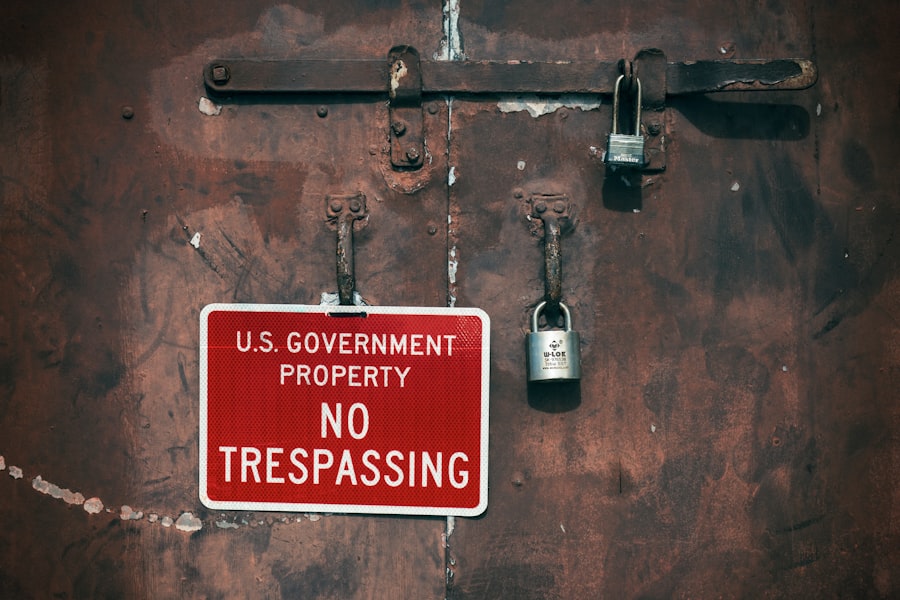The Office of Strategic Services (OSS) was established during World War II as the United States’ first centralized intelligence agency. Founded in 1942 under the leadership of William J. Donovan, the OSS was tasked with gathering intelligence, conducting espionage, and engaging in psychological warfare against the Axis powers.
Its creation marked a significant shift in American military strategy, as the nation recognized the necessity of intelligence operations in modern warfare. The OSS operated in various theaters of war, including Europe and the Pacific, employing a diverse array of tactics to gather information and disrupt enemy operations. The OSS was not only a precursor to the Central Intelligence Agency (CIA) but also a melting pot of innovative ideas and unconventional methods.
It recruited individuals from various backgrounds, including academics, journalists, and even artists, who brought unique skills to the agency. The OSS developed a reputation for its daring missions, such as the deployment of operatives behind enemy lines to gather intelligence and support resistance movements. Its legacy is evident in the intelligence practices that followed, as well as in the cultural narratives surrounding espionage and covert operations that continue to captivate the public imagination.
Key Takeaways
- The Office of Strategic Services (OSS) was the precursor to the CIA and played a key role in intelligence gathering and covert operations during World War II.
- The Manhattan Project was a top-secret research and development project that produced the first nuclear weapons during World War II.
- Operation Paperclip was a secret program that recruited German scientists, engineers, and technicians, including former Nazis, to work for the United States after World War II.
- The Japanese American Internment was the forced relocation and incarceration of approximately 120,000 Japanese Americans during World War II, following the attack on Pearl Harbor.
- The Office of War Information was a U.S. government agency created to coordinate the release of war news and propaganda during World War II.
The Manhattan Project
The Manhattan Project was a monumental scientific endeavor that aimed to develop the first nuclear weapons during World War
Initiated in response to fears that Nazi Germany might create an atomic bomb, this top-secret project brought together some of the brightest minds in physics and engineering. Led by figures such as J. Robert Oppenheimer and General Leslie Groves, the project involved extensive research and collaboration across multiple sites in the United States, including Los Alamos, Oak Ridge, and Hanford.
The culmination of this effort was the successful detonation of the first atomic bomb in July 1945 at the Trinity test site in New Mexico.

The implications of the Manhattan Project were profound and far-reaching. The successful development of nuclear weapons not only played a pivotal role in hastening the end of World War II with the bombings of Hiroshima and Nagasaki but also ushered in a new era of geopolitical tension known as the Cold War. The ethical considerations surrounding the use of atomic bombs have been debated ever since, raising questions about the morality of such destructive power and its impact on civilian populations.
The legacy of the Manhattan Project continues to influence discussions on nuclear proliferation and international security.
Operation Paperclip
| Operation Paperclip Metrics | Details |
|---|---|
| Number of scientists brought to the US | Over 1,600 |
| Duration of the operation | 1945-1959 |
| Objective | To recruit German scientists, engineers, and technicians for employment in the United States after World War II |
| Impact | Contributed to technological advancements and scientific research in the US |
Operation Paperclip was a covert program initiated by the United States government after World War II to recruit German scientists, engineers, and technicians for American military and aerospace projects. Recognizing the potential value of German expertise in fields such as rocketry and aerodynamics, U.S. officials sought to bring these individuals to America, often overlooking their previous affiliations with the Nazi regime.
This operation was emblematic of the complex moral dilemmas faced by the United States during the early years of the Cold War, as it prioritized scientific advancement over accountability for past actions. The most notable figure associated with Operation Paperclip was Wernher von Braun, a leading rocket scientist who played a crucial role in developing the V-2 rocket for Germany during the war.
While Operation Paperclip facilitated significant technological advancements, it also sparked controversy regarding the ethical implications of employing former Nazis and raised questions about how history remembers those who contributed to both destruction and progress.
The Japanese American Internment
During World War II, the United States government implemented a policy of internment that forcibly relocated and incarcerated approximately 120,000 Japanese Americans, two-thirds of whom were U.S. citizens. Following Japan’s attack on Pearl Harbor in December 1941, fear and suspicion towards Japanese Americans escalated, leading to Executive Order 9066, which authorized military authorities to designate certain areas as exclusion zones.
This decision resulted in the establishment of internment camps across the country, where families were uprooted from their homes and subjected to harsh living conditions. The internment of Japanese Americans is now widely recognized as a grave injustice fueled by racial prejudice and wartime hysteria. Many internees lost their businesses, homes, and personal belongings, while others faced significant psychological trauma from their experiences.
In subsequent decades, there has been a concerted effort to acknowledge this dark chapter in American history. In 1988, President Ronald Reagan signed a bill that provided reparations to surviving internees and formally apologized for the government’s actions. This acknowledgment serves as a reminder of the importance of safeguarding civil liberties, even during times of national crisis.
The Office of War Information

The Office of War Information (OWI) was established in 1942 as a means for the U.S. government to disseminate information about World War II to both domestic and international audiences. Tasked with promoting war efforts and maintaining public morale, the OWI utilized various media platforms, including radio broadcasts, films, posters, and print publications.
By crafting compelling narratives about American values and military successes, the OWI sought to unify public sentiment and encourage participation in war-related activities such as rationing and enlistment. The OWI’s influence extended beyond mere propaganda; it also played a crucial role in shaping public perception of various issues related to the war. For instance, it worked to counteract negative stereotypes about minority groups serving in the military while promoting messages of unity among diverse populations.
However, its efforts were not without controversy; some critics argued that the OWI’s messaging sometimes veered into manipulation or censorship. Nevertheless, its legacy endures as an example of how information can be wielded as a powerful tool during times of conflict.
The War Refugee Board
The War Refugee Board (WRB) was established in January 1944 by President Franklin D. Roosevelt in response to growing concerns about the plight of Jews and other persecuted groups during the Holocaust. Tasked with rescuing victims of Nazi oppression and providing them with safe haven, the WRB operated under significant constraints due to existing immigration policies and widespread anti-Semitism within American society.
Despite these challenges, the board managed to facilitate the rescue of thousands of individuals through various means, including negotiations with foreign governments and support for underground networks. One notable achievement of the WRB was its collaboration with organizations such as the American Jewish Joint Distribution Committee to provide aid to refugees fleeing Europe. The board’s efforts highlighted both the potential for humanitarian action during times of crisis and the limitations imposed by political realities.
While it is often criticized for not doing enough to save lives during the Holocaust, the WRB’s existence marked an important acknowledgment by the U.S. government of its moral responsibility to assist those facing persecution.
The United States and the Holocaust
The United States’ response to the Holocaust remains a complex and contentious topic in historical discourse. As evidence of Nazi atrocities emerged throughout World War II, many Americans were horrified but largely uninformed about the full extent of what was occurring in Europe. Government officials faced significant challenges in balancing public sentiment with political realities; widespread anti-Semitism and isolationist attitudes hindered efforts to take decisive action against Nazi Germany or provide refuge for Jewish refugees.
In retrospect, many historians argue that more could have been done by U.S. leaders to intervene or assist those targeted by genocide. While some initiatives were undertaken—such as limited immigration quotas and humanitarian aid—the overall response was often seen as inadequate given the scale of suffering experienced by millions.
The post-war period saw increased awareness and reflection on these failures, leading to greater advocacy for human rights protections globally. The legacy of America’s response to the Holocaust continues to shape contemporary discussions about genocide prevention and humanitarian intervention.
The Bracero Program
The Bracero Program was a bilateral agreement between the United States and Mexico that allowed Mexican laborers to work temporarily in American agriculture during World War
While beneficial for many workers seeking employment opportunities, the Bracero Program also raised significant concerns regarding labor rights and exploitation. Many braceros faced harsh working conditions, low wages, and inadequate living arrangements while employed on American farms. Additionally, issues surrounding discrimination and social integration persisted long after their contracts ended.
The program’s legacy is multifaceted; it not only contributed significantly to U.S. agriculture but also laid groundwork for ongoing debates about immigration policy and labor rights that continue today.
The Women’s Army Corps (WAC)
The Women’s Army Corps (WAC) was established during World War II as a means for women to serve in non-combat roles within the U.S. Army. Created in 1942 amid growing recognition of women’s capabilities beyond traditional domestic roles, WAC provided opportunities for women to contribute directly to military efforts while also challenging societal norms regarding gender roles.
Women enlisted in various capacities—ranging from clerical work to technical positions—freeing up men for combat duty. The impact of WAC extended beyond wartime service; it played a crucial role in reshaping perceptions about women’s contributions both within military contexts and society at large. As women proved their competence in various roles traditionally held by men, they paved the way for future generations seeking equality in both military service and civilian careers.
The legacy of WAC is evident today through ongoing discussions about gender equality within armed forces and broader societal contexts.
The United States and the Nuremberg Trials
The Nuremberg Trials represented a landmark moment in international law following World War II when Allied powers sought justice for war crimes committed by Nazi leaders. Initiated in 1945, these trials aimed not only to hold individuals accountable but also to establish legal precedents regarding crimes against humanity and genocide. The proceedings were groundbreaking; they marked one of the first instances where state leaders were prosecuted for actions taken during wartime.
The trials faced numerous challenges—ranging from legal complexities surrounding jurisdiction to debates over fairness—but ultimately set important standards for future international tribunals. They underscored principles such as individual accountability under international law while also highlighting moral imperatives regarding justice for victims of atrocities. The legacy of Nuremberg continues to resonate today as nations grapple with issues related to war crimes accountability and human rights protections globally.
The Tuskegee Airmen
The Tuskegee Airmen were a group of African American pilots who served with distinction during World War II as part of the U.
Army Air Forces. Trained at Tuskegee Institute in Alabama, these men faced significant racial discrimination both within military ranks and society at large yet persevered against formidable odds to prove their capabilities as aviators.
Their exemplary performance in combat missions earned them numerous accolades while challenging prevailing stereotypes about race and ability. The legacy of the Tuskegee Airmen extends beyond their military achievements; they played an instrumental role in advocating for desegregation within armed forces post-war through their exemplary service record. Their contributions helped pave the way for future generations seeking equality within military service while also influencing broader civil rights movements across America.
Today, they are celebrated not only for their bravery but also for their enduring impact on social justice initiatives that continue to shape contemporary discussions around race relations in America.
During World War II, the US government implemented extensive measures to maintain secrecy and protect sensitive information from enemy forces. This era was marked by a complex web of intelligence operations and classified projects, such as the Manhattan Project, which were crucial to the war effort. For a deeper understanding of the intricacies of US government secrecy during this period, you can explore a related article on the topic by visiting In The War Room. This resource provides valuable insights into the strategies and challenges faced by the government in safeguarding critical information during one of the most pivotal times in history.
WATCH THIS! 😱The Nazi Trial America Never Wanted You To See 😱
FAQs
What was the US government secrecy during WWII?
During World War II, the US government implemented various measures to maintain secrecy and protect sensitive information related to military operations, intelligence, and scientific research. This included censorship, classified projects, and the creation of agencies such as the Office of Censorship and the Office of Strategic Services.
What were some examples of US government secrecy during WWII?
Examples of US government secrecy during WWII include the Manhattan Project, which developed the atomic bomb, and the Ultra program, which involved breaking German codes. Additionally, the US government censored news reports, restricted access to certain areas, and conducted covert operations.
How did US government secrecy during WWII impact the public?
The impact of US government secrecy during WWII on the public varied. While some measures were necessary for national security, they also limited the flow of information and affected freedom of the press. The public was often unaware of the full extent of military operations and scientific developments until after the war.
What were the reasons for US government secrecy during WWII?
The primary reasons for US government secrecy during WWII were to protect military strategies and operations, safeguard classified scientific research, and prevent enemy intelligence from obtaining crucial information. Secrecy was also used to maintain morale and prevent panic among the civilian population.
How did US government secrecy during WWII impact post-war policies?
The experience of government secrecy during WWII influenced post-war policies related to national security, intelligence gathering, and the classification of information. It also led to the establishment of permanent agencies such as the Central Intelligence Agency (CIA) and the National Security Agency (NSA) to address ongoing security concerns.




